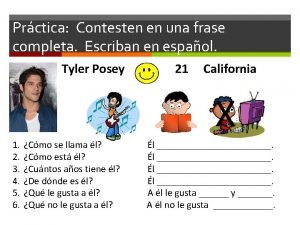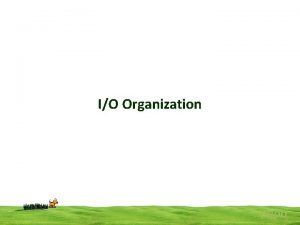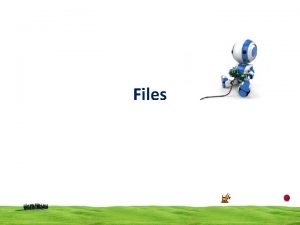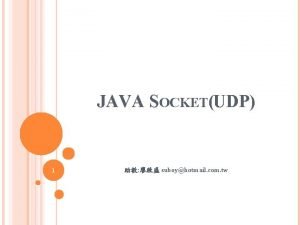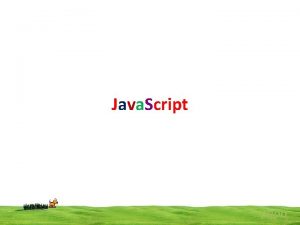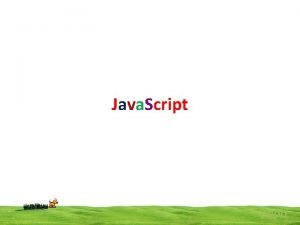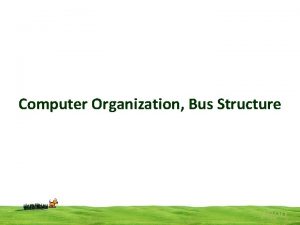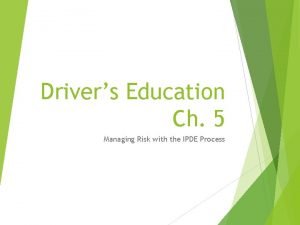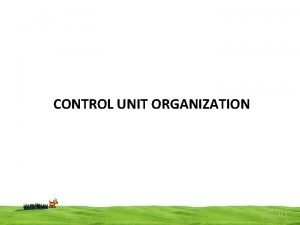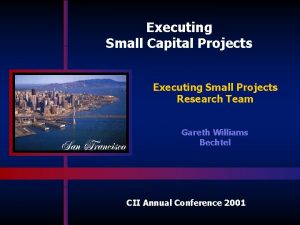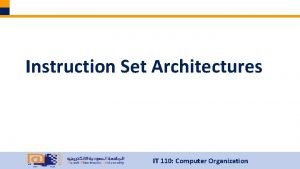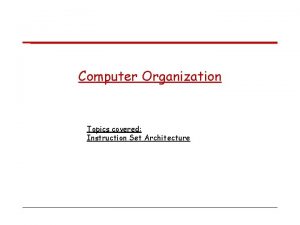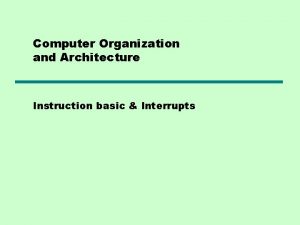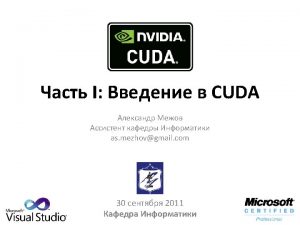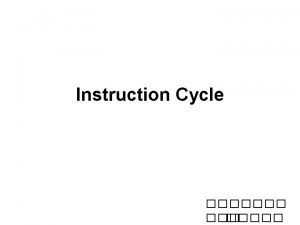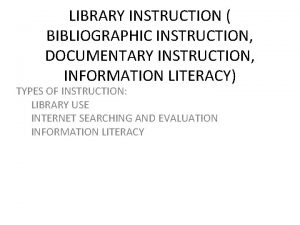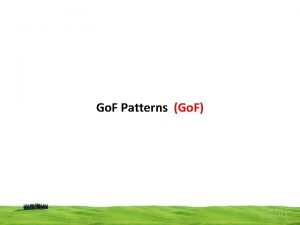Computer Organization Executing an Instruction popo Computer Organization

















- Slides: 17

Computer Organization, Executing an Instruction popo

Computer Organization, Executing an Instruction • Fundamental Concepts • Processor fetches one instruction at a time and perform the operation specified. • Instructions are fetched from successive memory locations until a branch or a jump instruction is encountered. • Processor keeps track of the address of the memory location containing the next instruction to be fetched using Program Counter (PC). popo

Computer Organization, Executing an Instruction • Fetch the contents of the memory location pointed to by the PC. • The contents of this location are loaded into the IR (fetch phase). • IR ← [[PC]] • Assuming that the memory is byte addressable, increment the contents of the PC by 4 (fetch phase). • PC ← [PC] + 4 • Carry out the actions specified by the instruction in the IR (execution phase). popo

Computer Organization, Executing an Instruction popo

Computer Organization, Executing an Instruction • Type of instructions • Transfer a word of data from one processor register to another or to the ALU. • Perform an arithmetic or a logic operation and store the result in a processor register. • Fetch the contents of a given memory location and load them into a processor register. • Store a word of data from a processor register into a given memory location. • All operations and data transfers are controlled by the processor clock. popo

Computer Organization, Executing an Instruction • Register Transfers popo

Computer Organization, Executing an Instruction • Performing an Arithmetic or Logic Operation • The ALU is a combinational circuit that has no internal storage. • ALU gets the two operands from MUX and bus. • The result is temporarily stored in register Z. • What is the sequence of operations to add the contents of register R 1 to those of R 2 and store the result in R 3? – R 1 out, Yin – R 2 out, Select. Y, Add, Zin – Zout, R 3 in popo

Computer Organization, Executing an Instruction • Fetching a Word from Memory • The response time of each memory access varies (cache miss, memory-mapped I/O, …). • To accommodate this, the processor waits until it receives the requested operation has been completed (Memory-Function-Completed, MFC). • Move (R 1), R 2 • MAR ← [R 1] • Start a Read operation on the memory bus • Wait for the MFC response from the memory • Load MDR from the memory bus • R 2 ← [MDR] popo

Computer Organization, Executing an Instruction Execution of a Complete Instruction Add (R 3), R 1 Fetch the instruction Fetch the first operand (the contents of the memory location pointed to by R 3) • Perform the addition • Load the result into R 1 • • popo

Computer Organization, Executing an Instruction • Execution of a Complete Instruction • Add (R 3), R 1 popo

Computer Organization, Executing an Instruction popo

Computer Organization, Executing an Instruction • Layered view of a computer system • • The layered hierarchical view of the computer system illustrates how the operating system interacts with the users of the computer system: popo

Computer Organization, Executing an Instruction popo

Computer Organization, Executing an Instruction • A computer system can be divided into four components • Hardware • Operating System • Application programs • Users popo

Computer Organization, Executing an Instruction popo

Computer Organization, Executing an Instruction • Hardware: the CPU, the memory and the I/O devices • Provides the basic computing resources for the system • Application programs: - like word processors, spreadsheets, compilers, web browsers • Provides the way in which these resources are used to solve user’s problems • OS: controls and coordinates the use of the h/w among the various application programs for the various user • Users • The ultimate use of the computer is to provide one or set of applications • The user of these applications is called end users • Is not concerned with the computer architecture • User views a computer in terms of an application popo

Computer Organization, Executing an Instruction • That applications can be expressed in a programming language and is developed by an application progm • An application is a set of machine instructions that is completely responsible for controlling the h/w • Some of these prog are called utility prog such as • Management of files • Control of i/o • The most important system prog is called OS • Os masks the details of the h/w from the programmer and provide an interface with system • OS acts as a mediator making it easier for the programmer and for the application programs to access and use those facilities and services. popo
 Frase completa
Frase completa Popo io
Popo io Stream is a sequence of bytes
Stream is a sequence of bytes Trenutel
Trenutel Www.popo.tw port 80
Www.popo.tw port 80 Scriptjava
Scriptjava Js popo
Js popo Three bus structure in computer organization
Three bus structure in computer organization Instruction set architecture in computer organization
Instruction set architecture in computer organization Differentiated instruction vs individualized instruction
Differentiated instruction vs individualized instruction Direct instruction strategies
Direct instruction strategies The strategy making strategy executing process
The strategy making strategy executing process Classical plating technique
Classical plating technique Zone control system in driving
Zone control system in driving Process organization in computer organization
Process organization in computer organization Structure of computers
Structure of computers Difference between architecture and organisation
Difference between architecture and organisation Interrupt cycle flow chart
Interrupt cycle flow chart
